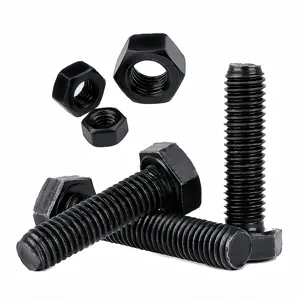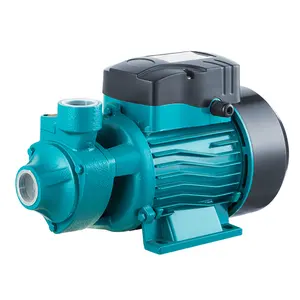Popular in your industry










































































Related Searches:




























































































































































Top categories
About robot weeder
The dawn of a new era in agriculture is upon us, marked by the silent hum of machinery and the precision of artificial intelligence. Robot weeders, once a figment of science fiction, are now at the forefront of an agricultural revolution. These sophisticated machines are not just novelties; they are vital answers to labor shortages and the clarion call for sustainable farming. As we stand on the brink of this transformative period, robot weeders emerge as harbingers of efficiency and environmental stewardship, poised to redefine our relationship with the land and the food it yields.
The Emergence of Robot Weeders in Modern Agriculture
The agricultural sector is witnessing a significant shift with the integration of robotics, particularly with the advent of robot weeders. These advanced machines are becoming increasingly prevalent as they offer a solution to the growing challenges of labor shortages and the need for sustainable farming practices. Robot weeders automate the weeding process, reducing the reliance on manual labor and enabling higher precision in targeting unwanted plants. This not only conserves resources but also supports environmentally friendly farming methods. The development of robotic weeding involves research into alternative methods to remove weeds without harming the crops, showcasing the potential of these machines to transform traditional agricultural practices. As the technology matures, robot weeders are set to become more common in the field, contributing to the digitalization of agriculture and helping farmers manage their crops more effectively and efficiently.
Understanding Robot Weeders: Definition and Types
Weeding robots, an innovative blend of artificial intelligence, robotics, and agricultural technology, are designed to help farmers manage weed infestation effectively and sustainably. These robots are equipped with machine vision systems to distinguish weeds from crops, using cameras and sensors to analyze visual information based on size, shape, and color.
There are several types of weeding robots, categorized by their weed detection and removal methods. Vision-based mechanical weeding robots use advanced cameras and sensor systems for identification and then physically remove weeds with a mechanical component. Spraying weeding robots also identify weeds using vision systems but utilize precision spraying mechanisms to apply herbicides directly onto the weeds.
Thermal weeding robots represent another category, using precision lasers or steam to eliminate weeds. Additionally, some robots employ multispectral imaging to detect weeds based on unique spectral signatures, which can be particularly effective in dense crop environments.
Weeding robots can be autonomous, navigating and removing weeds without human intervention, or semi-autonomous, requiring some degree of manual navigation or oversight. The adaptability of weeding robot technology caters to various crop types, environmental considerations, and farm sizes, showcasing the potential for more innovative designs and methodologies in the future.
The Role of Alibaba.com in Advancing Agricultural Technology
Alibaba.com plays a pivotal role in the advancement of agricultural technology by offering a diverse range of robotic solutions for farming. Among these, robot weeders stand out as innovative tools designed to enhance agricultural productivity. These autonomous machines are part of a broader category of agricultural equipment available on the platform, which includes various types of lawn mowers and sprayers tailored for agricultural use.
The platform serves as a marketplace that connects manufacturers and suppliers with businesses, facilitating access to the latest technologies in farm automation. Robot weeders are a prime example of such technologies, designed to reduce labor costs and increase efficiency. Alibaba.com's listings include a variety of these robots, showcasing different models and features that cater to the specific needs of modern agriculture.
By providing detailed information and a wide selection of robot weeders, Alibaba.com supports the integration of smart farming solutions into the agricultural industry. This not only helps farmers in managing their crops more effectively but also contributes to the sustainable development of agriculture by promoting environmentally friendly weeding methods. The platform's commitment to innovation is evident in its support for advanced agricultural tools that promise to transform the landscape of farming.
Applications of Robot Weeders in Various Agricultural Settings
Weeding robots, with their advanced technologies, are finding applications across various agricultural settings, reshaping weed management practices. In large-scale farming operations, these robots can cover extensive areas, tirelessly working to identify and eliminate weeds with precision. Their use is not limited to expansive fields; even smaller organic farms are benefiting from the non-chemical weeding methods that these robots offer. By employing mechanical or thermal weed removal techniques, they cater to the growing demand for organic produce, which requires adherence to strict no-chemical use policies.
The adaptability of weeding robots is also evident in their ability to function in diverse environments. Whether it's the open fields of grain crops or the more structured rows of a vegetable farm, these robots can navigate and adapt to different crop types and planting patterns. This versatility extends to vineyards and orchards, where precision is paramount to avoid damage to valuable plants. Furthermore, the integration of data collection capabilities in these robots provides farmers with insights into crop health and soil conditions, enabling more informed decisions that can lead to improved yields and sustainable farming practices.
Key Features and Technologies Behind Robot Weeders
Robot weeders are at the forefront of agricultural innovation, combining artificial intelligence, robotics, and precision farming techniques. These machines are equipped with advanced machine vision systems, which are pivotal in distinguishing weeds from crops. Utilizing cameras and sensors, they analyze visual information to identify weeds based on size, shape, and color. Once detected, different robots may use mechanical tools or targeted herbicide application to remove the weeds without damaging the crops.
Some robot weeders are designed with vision-based mechanical systems that physically uproot weeds, offering a non-chemical weeding solution ideal for organic farming. Others feature precision spraying mechanisms that apply herbicides directly onto weeds, significantly reducing chemical usage. Additionally, thermal weeding robots use laser or steam to eliminate weeds, providing an alternative to both mechanical removal and chemical herbicides.
Multispectral imaging robots represent a cutting-edge category, capturing data across both visible and non-visible light spectrums. This technology enhances weed detection in complex crop environments, leading to improved accuracy. Furthermore, the autonomy of these robots varies, with some capable of navigating and removing weeds independently, while semi-autonomous models may require some human oversight.
Material and Design Considerations for Durability and Efficiency
The design of the advanced blue laser weeding robot reflects a significant advancement in agricultural technology, focusing on durability and efficiency. The robot's structure includes a tracked mobile platform module, which provides stability and maneuverability across various terrains in corn seedling fields. This module is essential for the robot's consistent performance, as it houses the drive wheels, support weight running wheels, guide wheels, rubber tracks, and a track tensioning mechanism, all of which contribute to the robot's ability to navigate through the fields effectively.
Moreover, the robotic arm laser emitter module is a critical component, designed with a five-degree-of-freedom arm to meet the precise requirements of weeding operations. This design allows for accurate alignment of the laser, ensuring that the weeds are targeted without damaging the surrounding corn seedlings. The materials used in the construction of the robot are chosen for their durability and ability to withstand the rigors of farm operations, ensuring long-term functionality and reducing the need for frequent maintenance.
The efficiency of the robot is further enhanced by its machine vision capabilities, which utilize a convolutional neural network to differentiate between weeds and crops. This intelligent identification system is pivotal in enabling the robot to perform its tasks with minimal human intervention, optimizing the weeding process, and conserving resources. The integration of these design elements and materials underscores the robot's potential to revolutionize weeding methods in modern agriculture, offering a sustainable and effective solution for farmers.
Advantages of Robot Weeders Over Traditional Weeding Methods
Robotic weeders offer a transformative approach to managing weeds in agriculture. By leveraging artificial intelligence and robotics, these machines can identify and target weeds with precision, distinguishing them from crops without human intervention. This technology enables various methods of weed control, including spraying, digging out, or using lasers to eliminate unwanted vegetation.
The adoption of robotic weeding technology is particularly beneficial for organic producers who face strict limitations on chemical use. For these farmers, robotic weeders can significantly reduce the reliance on manual labor, traditionally the primary method for weed control in organic farming. The potential cost savings in weeding can be substantial, even though they may represent a small percentage of the total operating costs for crops like lettuce and broccoli.
Beyond cost reduction, robotic weeders can improve the efficiency and reliability of weeding operations. They allow for more flexible weeding schedules, which can lead to increased crop yields. Additionally, the precision of these robots in applying chemicals can contribute to environmental benefits by reducing the overuse of inputs that can cause ecological harm.
The broader implications of robotic weeding technology mirror those of past agricultural advancements, such as tractors, which led to increased productivity and potentially lower food prices. As this technology becomes more widespread, it could also result in higher land values and wages for the remaining agricultural workforce, reflecting a shift towards more capital-intensive farming practices.
Case Studies: Success Stories of Robot Weeders from Alibaba.com
One innovative product in the agricultural sector is a robot that utilizes advanced AI and deep learning technology for weed control. This robot represents a significant advancement in agricultural technology, capable of eliminating weeds with precision, thereby supporting farmers in managing their crops more effectively. The robot operates by identifying weeds using computer vision and then targeting them with lasers, a method that is both efficient and environmentally friendly as it does not harm the crops or soil.
The effectiveness of this weeding robot is evident in its ability to address weeds quickly, targeting them earlier in their lifecycle and on a large scale. It has been reported to handle up to two acres per hour and deal with thousands of weeds per minute. This level of efficiency has led to a substantial reduction in weed control costs for growers. The robot's adaptability is also notable, with the capability to work on a diverse range of crop types and the flexibility to create and implement new crop models rapidly.
The recognition of this technology by prestigious awards underscores its impact on modern farming practices. Its introduction of advanced thinning technology further enhances its utility in agriculture, optimizing crop spacing for better growth and yield. The deployment of this weeding robot across various regions demonstrates its scalability and the growing trust in robotic solutions to address agricultural challenges.
Conclusion
In conclusion, robot weeders represent a paradigm shift in agricultural practices, blending AI with the age-old challenge of weed management. These machines, from vision-based mechanical weeders to thermal and precision spraying robots, offer a glimpse into a future where farming is more efficient, sustainable, and less reliant on manual labor. Alibaba.com's role in democratizing access to such technology underscores a commitment to innovation and sustainable development. The versatility of robot weeders across various agricultural settings, coupled with their advanced features and durable designs, heralds a new chapter in farming efficiency. Case studies showcase the tangible benefits of these technologies in reducing costs and environmental impact while improving crop yields. As robot weeders continue to evolve and become more integrated into farming operations, they hold the promise of reshaping agriculture into a more productive and sustainable industry, benefiting producers and consumers alike.


































